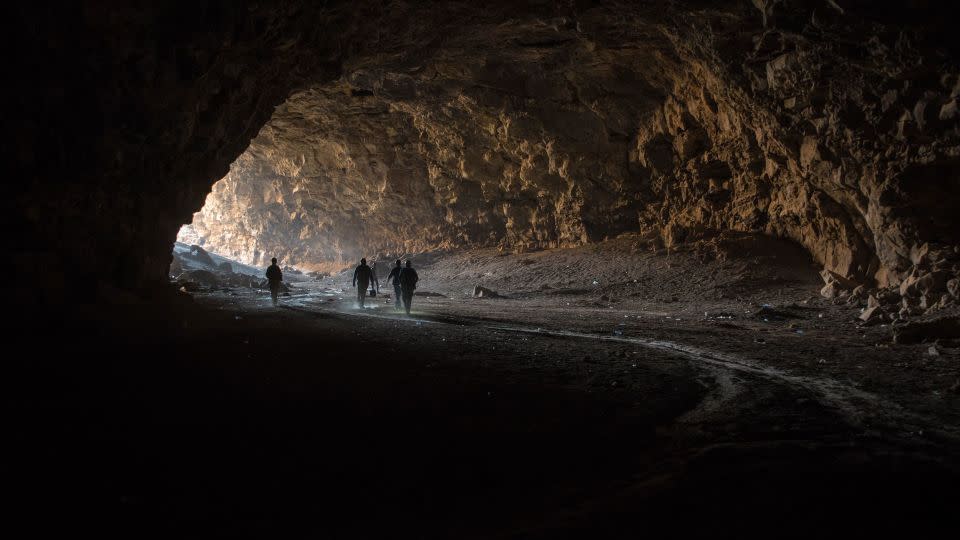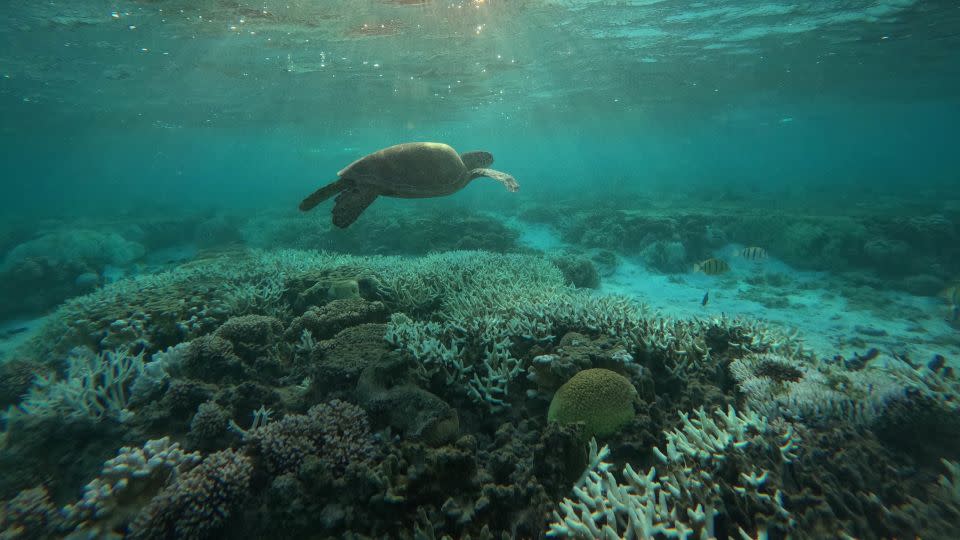Beethoven’s hair reveals new insights into the composer’s health issues
- Oops!Something went wrong.Please try again later.
Editor’s note: A version of this story appeared in CNN’s Wonder Theory science newsletter. To get it in your inbox, sign up for free here.
Ludwig van Beethoven’s “Ode to Joy” is one of the first songs I learned to play on the violin.
I’ll never forget the elation I felt playing the iconic fourth movement of his Ninth Symphony alongside my fellow orchestra members, each note joining in a celebration of togetherness.
But every ebullient music moment has a flip side, and Beethoven also poured his feelings of despair into his final symphony.
Beethoven began experiencing hearing loss in his 20s and became deaf in his 30s — but that didn’t stop him from composing some of his greatest and most enduring pieces.
It was the classical composer’s wish that his health issues would be understood and conveyed to the public. While his doctor’s notes were lost to time, scientists sequenced Beethoven’s genome from locks of his hair last year.
Now, researchers are one step closer to understanding the troubled genius’ mysterious ailments.
Explorations

A new analysis of Beethoven’s hair has shown the composer experienced lead poisoning toward the end of his life. He died at age 56 in 1827.
Tests revealed incredibly elevated levels of lead, as well as arsenic and mercury, in two of his locks, likely from drinking wine that was sweetened with lead.
Researchers don’t believe lead poisoning would have been enough to kill him, but it could have contributed to the composer’s well-known gastrointestinal issues and deafness.
Unlocking the factors that led to Beethoven’s death due to kidney and liver diseases could also shed light on how the composer transformed his pain into music.
“People say, ‘The music is the music, why do we need to know about any of this stuff?’ But in Beethoven’s life, there is a connection between his suffering and the music,” said William Meredith, a Beethoven scholar.
Solar update
Dazzling auroras could appear in the skies over locations as far south as Alabama this weekend due to a rare spike in solar activity.
Scientists at the Space Weather Prediction Center have observed multiple flares and coronal mass ejections. The large clouds of ionized gas, called plasma, and dynamic magnetic fields are erupting from a cluster of sunspots that measures 16 times the diameter of Earth.
The forecasted solar storm has the potential to disrupt the power grid and communications on Earth, but experts agree that there is no need for people to take extraordinary measures to prepare for space weather.
However, you may want to take photos of the sky with your phone, as your camera may capture the dancing lights of the aurora borealis.
We are family

Millions of years ago, lava flows on Earth created a network of vast subterranean tunnels called lava tubes, providing a perfect place for our Neolithic ancestors to beat the heat.
During the Stone Age, as early as 7,000 years ago, the tunnels sheltered herders and their livestock from the relentless heat and wind of the Arabian Peninsula.
Researchers in Saudi Arabia uncovered carvings of images showcasing stick-figure humans alongside animals such as dogs and sheep on the walls at Umm Jirsan. Artifacts have helped archaeologists piece together the story of the people who sought refuge in the lava tubes as well as how they adapted to such arid environments.
Once upon a planet
Strange creatures began appearing on Earth more than 500 million years ago — and scientists now think it’s because Earth’s protective magnetic field nearly collapsed.
The first life-forms were single-celled, microscopic organisms. But 591 million years ago, Earth’s magnetic field weakened drastically, potentially allowing for an increase in oxygen in the atmosphere.
After this event, animals with strikingly odd fan, doughnut and tube shapes appeared in the fossil record, representing the first complex animals on the planet.
Consequences

A rare event is transforming the Great Barrier Reef, as well as reef systems around the world, into silent marine graveyards.
It’s the fourth mass coral bleaching event, driven by rising ocean temperatures amid the climate crisis, since the late 1990s, according to the National Oceanic and Atmospheric Administration.
Marine heat waves stress corals, causing them to expel algae and drain their colors, and the die-off is occurring at unprecedented levels, experts say.
“What is happening now in our oceans is like wildfires underwater,” said Kate Quigley, principal research scientist at Australia’s Minderoo Foundation. “We’re going to have so much warming that we’re going to get to a tipping point, and we won’t be able to come back from that.”
Discoveries
Take your time exploring these new findings:
— When being attacked by predators, a dice snake fakes its own death as a protective measure — and it uses gory special effects to pull off a convincing theatrical display.
— The Dark Energy Camera captured a dramatic image of the cosmic feature “God’s Hand” that appears to reach for a defenseless galaxy — but it’s really a rarely seen celestial phenomenon.
— The first historic crewed flight test of Boeing’s Starling spacecraft has been rescheduled to no earlier than May 17 after a faulty valve halted a launch attempt on Monday.
Like what you’ve read? Oh, but there’s more. Sign up here to receive in your inbox the next edition of Wonder Theory, brought to you by CNN Space and Science writers Ashley Strickland and Katie Hunt. They find wonder in planets beyond our solar system and discoveries from the ancient world.
For more CNN news and newsletters create an account at CNN.com

